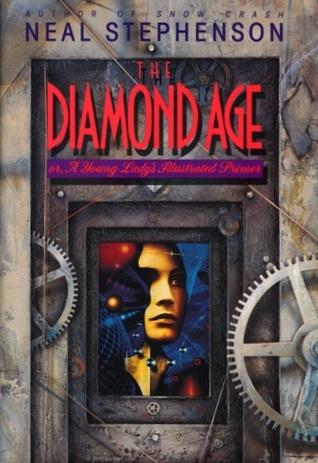I have written on several occasions of Snow Crash, the visionary science fiction novel that Neal Stephenson published in 1992. The book envisioned a future where nation-states had diminished importance. Most people lived as citizens of corporate enclaves and spent their free time jacked into virtual worlds. Snow Crash was written a year before the release of Mosaic, the first popular internet browser, and eleven years before the inception of Second Life, the best known virtual world.
Stephenson’s next book, The Diamond Age (1995), gives us a world transformed by nanotechnology, the manipulation of matter at the molecular level. In Stephenson’s 21st century, the integration of molecular biology and semiconductor physics has transformed everything. In the first scene, we meet Bud, a would-be enforcer for the lucrative “alternate pharmaceutical” industry, who has bulked up his muscles with intelligent, micro-robotic implants and wears what we now know as Google glasses to precision aim his “skull gun,” an implant as nasty as it sounds. In passing, Stephenson shows Bud in a waiting room, where people read articles on smart paper, essentially tablet computers, that have replaced magazines. Remember: The Diamond Age was published 15 years before the iPad and 17 years before the first Google Glass prototype.
In the diamond age, so named because synthetic diamond is cheaper than glass, objects made by hand are expensive and revered, since everything else is produced by matter compilers (a generation beyond 3d printers)? Just as in Snow Crash, nation states are obsolete. The upper classes live as members of cultural enclaves known as phyles or tribes, whose settlements are often above ground level, while the lower class “thetes” or people without a tribe, live below.
John Perceval Hackworth is a nano tech engineer for the Neo-Victorian, “New Atlantis” tribe. New Atlantis sits on an artificial mountain a mile above the polluted streets of Shanghai. The clave is ruled as a corporate oligarchy by “Equity Lords” who style their culture after 19th century English royalty.
Hackworth is commissioned by Lord Finkle-McGraw to program an artificially intelligent book, A Young Lady’s Illustrated Primer, a subversive text, which will help his daughter Elizabeth lead a life beyond the boundaries of the status quo. Hackworth makes an illegal copy for his own daughter, Fiona, but this is stolen when Hackworth is mugged. It falls into the hands of Nell, Bud’s daughter, a thete who lives in a ground level slum. Hackworth, Fiona, Nell,her brother Harv, an actress named Miranda, and a Chinese black market engineer named Dr. X are all involved with the Primer for reasons of their own; at its deepest level, the Primer holds the key to decoding and reprogramming humankind’s future.
The Diamond Age, which won Hugo and Locus awards in 1996, is classified by genre wonks as “post-cyberpunk,” whatever that means. As he was in technology and socio-economics, so was Stephenson decades ahead of his time in speculative fiction. We call this kind of book “dystopian” now. I can think of at least two recent movies that play upon themes explicit in The Diamond Age. I won’t name them because I have no evidence that their creators read the book. Still, it is hard to imagine any serious writer of dystopian fiction who hasn’t marveled at Neal Stephenson’s vision.


“We call this kind of book “dystopian” now” — I don’t get this phrase… I mean, there were thousands of dystopian books written before his as far back, as you know, Jack London’s The Heel (1909). Just because some classification isn’t specific does not mean it doesn’t have dystopic elements.
LikeLike
*The Iron heel (1908) — oops.
LikeLike
More than any other take on genre, I like what Neil Gaiman had to say: “I [am] not alone in finding myself increasingly frustrated with the boundaries of genre: the idea that categories which existed only to guide people around bookshops now seemed to be dictating the kind of stories that were being written.” As it is now used, I think of “dystopian” as a marketing tag coined to promote a certain class of books, especially YA, written over the last decade.
LikeLike
Yes, it is a marketing tag. But that does not mean it wasn’t also a marketing tag for SF in general in the past. Many of the literary figures, such as Angela Carter, dabbled in post-apocalyptical dystopias — which were then branded as “SF” and marketed in the normal paperback form for the normal SF market.
LikeLike
Thanks for telling me about this. It isn’t the kind of book I would normally read, but I might take a peek.
LikeLike
Although I think Stephenson is a visionary, I’d have to pull back from recommending the book as an exemplar to one who simply wants to sample the genre. It’s long, for one thing, and as many critics point out, Stephenson has a tendency to end his books too abruptly. From a purely literary point of view, in the whole “dystopian” sub-genre, I might point to The City of Ember, 2003, a middle-grade book by Jeanne DuPrau, who I hadn’t heard of before she was a presenter at one of our local SCBWI conferences a few years back.
LikeLike
Thank you. I loved Snow Crash so based on your review I am going to read The Diamond Age.
LikeLike